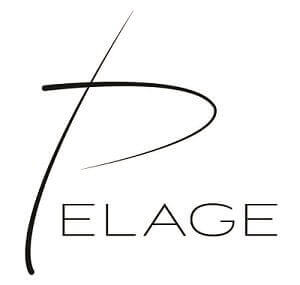
I previously wrote about Pelage Pharmaceuticals in my 2019 post related to the research of its President and co-founder Dr. William Lowry. The other co-founders are Dr. Heather Christofk and Michael Jung. I also covered the findings of Dr. Lowry and Dr. Christofk’s UCLA team in a 2017 post.
These UCLA researchers discovered two topical compounds (RCGD423) and (UK5099) that regrew hair in mice via different mechanisms. Both drugs involve an increase in lactate production. This in turn activates hair follicle stem cells and leads to increased and quicker hair growth.
Dr. Lowry’s patent can be found here. Patent and technology rights to both topical drugs have been exclusively licensed to Pelage Pharmaceuticals by UCLA.
Update: March 9, 2024
Earlier today, Pelage Pharmaceuticals gave a positive update on its novel small molecule PP405. Full summary can be read here. In Phase 1 clinical trials, PP405 reactivated dormant hair follicle stem cells and triggered hair growth. The company’s presentation was made by Dr. Christina Weng and titled: “Inhibition of pyruvate oxidation activates human hair follicle stem cells ex vivo”. Pelage will begin its multi-center Phase 2a trial of PP405 in mid-2024. It will recruit both men and women with androgenetic alopecia.
Their description of this unique hair growth molecule is as follows:
“PP405 is a potent topical mitochondrial pyruvate carrier (MPC) inhibitor that acts on the cellular metabolic pathway to upregulate lactate dehydrogenase (LDH).”
Stem cells are particularly sensitive to LDH, so this results in their activation and subsequent hair growth. PP405 demonstrates a statistically significant increase in Ki67 signaling in the hair follicle bulge. Ki67 is a well-established marker of stem cell proliferation.
Pelage Pharmaceuticals Raises $16.75 Million and Phase 2 Trials to Begin in 2024
February 27. 2024
Great new update (h/t “YoYo”). Pelage Pharmaceuticals has raised $16.75 million in Series A Financing. More importantly, they will begin Phase 2 Clinical Trials for PP405 in mid-2024.
Phase I clinical data met primary safety endpoints. And they confirm that their was statistically significant stem cell activation in hair follicles after just one week of treatment with PP405.
Per CEO Daniel Gil, Ph.D.:
“Our scientific co-founders have uncovered a unique biological mechanism with the potential to reactivate hair growth in people with alopecia.”
The company will present translational data at the American Academy of Dermatology meeting in March 2024.
February 17, 2024
Earlier today, reader “Ben” made an very interesting discovery on Pelage Pharmaceuticals’ website. The following sentence at the bottom:
“Early Phase I clinical data shows statistically significant stem cell activation in the hair follicles after one week of treatment with PP405.”
This is super news. So their trials have started. I wonder if PP405 is RCGD423 or UK5099? Their website homepage describes PP405 as:
“A novel, non-invasive, topical small molecule drug platform that activates stem cells in the hair follicles directly to stimulate robust hair growth. By targeting an intrinsic metabolic switch in hair follicles, Pelage’s platform is suitable for all genders, skin types, and hair types.”
In other recent news, Pelage appointed Dr. Qing Yu Christina Weng as Chief Medical Officer.
RCGD423
RCGD423 activates the JAK-STAT signaling pathway, which in turn leads to an increase in lactate production. This extra lactate activates hair follicle stem cells and results in quicker hair growth.
UK5099
UK5099, blocks pyruvate (a glucose metabolite) from entering cell mitochondria. This also results in an increase in lactate production in the hair follicle stem cells, and therefore accelerates hair growth.